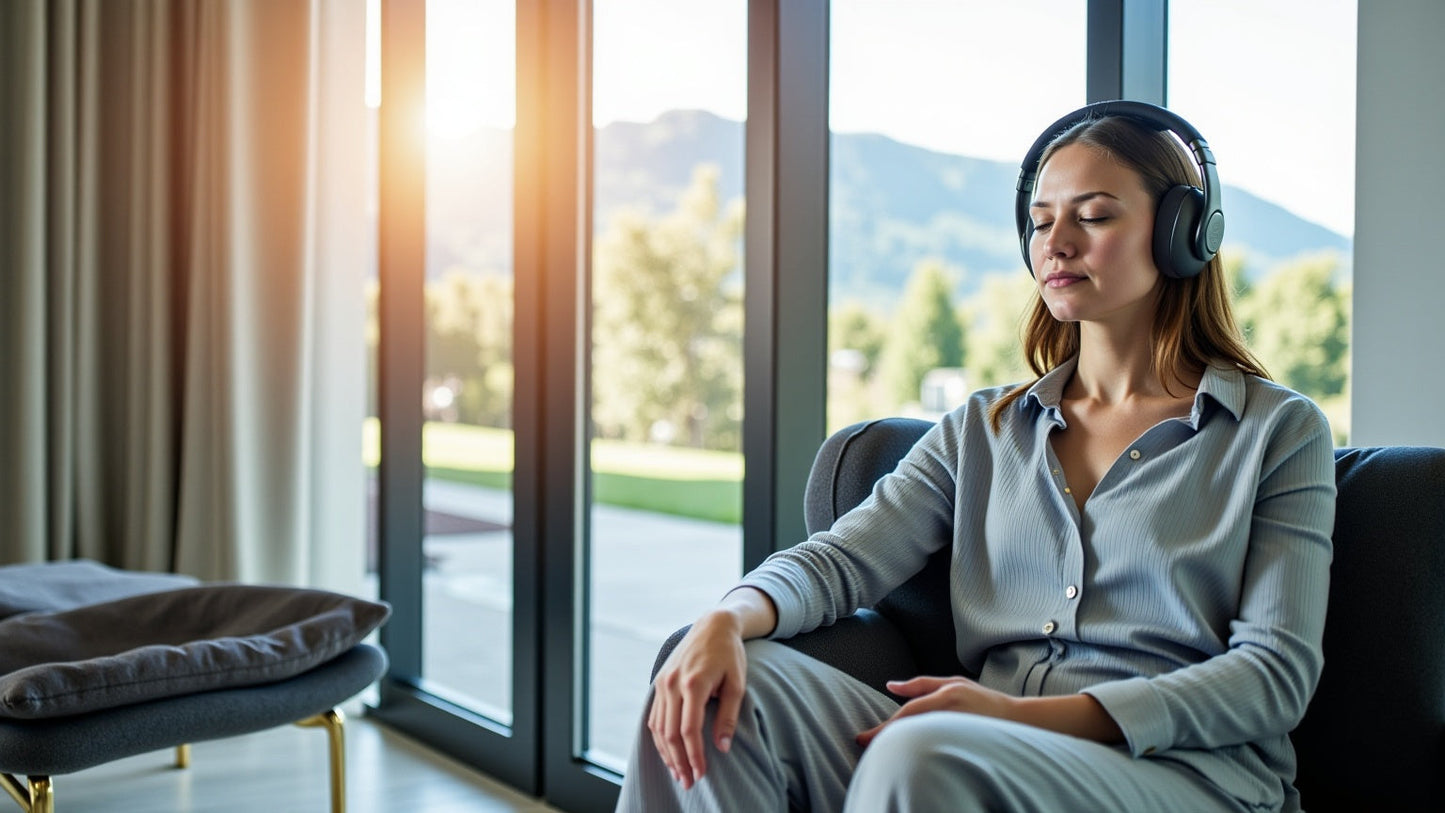
There’s a familiar moment when a song does more than play in the room. Your breathing slows, posture unknots, and the jittery background noise of the day falls into line. Daniel Levitin’s new book, Music as Medicine: How We Can Harness Its Therapeutic Power, is a 300-page argument that this feeling is not a party trick. It is physiology. It is psychology. And, more and more, it is becoming clinical practice. Published last month to wide attention, the book stakes out a practical, evidence-first case for sound medicine as a companion to traditional care, while inviting ordinary listeners to use everyday music with more intention.
What "Music as Medicine" sets in motion
Levitin, a neuroscientist, bestselling author, and former music producer who has spent decades studying how sound shapes the brain, now takes an explicitly clinical approach. He frames music as a pain reliever, stress reducer, recovery support, and social connector.
The book combines evidence from clinical trials with personal stories to show music’s therapeutic power. It highlights studies of Rhythmic Auditory Stimulation (RAS), which helps patients with movement disorders, and Melodic Intonation Therapy (MIT), which supports speech recovery after brain injury, among others. Levitin stresses that this is not magic or hype. Music works because two elements come together: structured methods validated by science (protocol) and the listener’s own taste and emotional connection to the music (preference).
Levitin also makes clear that no single frequency or genre heals everyone. What matters is music that feels personally meaningful. Timing and context matter too: in practice, this means choosing songs and sounds that resonate with your own memories and emotions, and using them intentionally to shift mood, manage stress, or aid recovery.
A short tour of mechanisms: how sound activates our brains
If you want music to do work, you need to know its levers. The book’s central mechanisms can be grouped into three overlapping systems: reward chemistry, timing circuits, and memory networks.
Start with reward. Dopamine, often called the brain’s motivation and pleasure signal, is consistently active when we experience powerful moments in music. It helps explain why certain passages can feel so rewarding and energizing. But dopamine is only part of the story. Recent research suggests that the brain’s opioid system also plays a role. Unlike dopamine, which signals motivation and reward prediction, the opioid system modulates physical sensations of pleasure and pain relief, adding another layer to the emotional impact that music can trigger.
In some experiments, scientists temporarily blocked the brain’s opioid receptors. When that happened, listeners described music as less moving, both emotionally and physically. This suggests that opioids, the brain’s natural painkillers, work together with dopamine to shape how we experience music. Dopamine helps signal motivation and reward, while the opioid system softens pain and adds physical pleasure. Together, they form a pathway by which music can ease distress and create a sense of relief.
Then there is timing. Rhythmic Auditory Stimulation (RAS) is one of the most mature “from-lab-to-clinic” music interventions. In Parkinson’s disease, carefully chosen beats act like an external metronome for damaged motor circuits, improving gait speed and stability and even reducing falls in randomized trials. The effect is not mystical; it’s brain entrainment. The auditory system is exquisitely precise, and coupling it to movement gives patients a scaffold that the basal ganglia—clusters of deep-brain structures that help coordinate movement and habit formation—can still follow.
Finally, there is the effect on memory. Music interacts closely with the brain’s memory systems and language circuits. One of the clearest examples is Melodic Intonation Therapy (MIT). This approach starts from a striking observation: some people who lose the ability to speak after a brain injury are still able to sing. MIT builds on this by exaggerating the melody and rhythm of simple phrases, encouraging the brain’s right hemisphere to step in and support communication. In practice, this taps into musical memory, which often stays intact even when speech is impaired.
Studies have shown that people with long-term speech difficulties, such as nonfluent aphasia—a condition where people know what they want to say but struggle to produce fluent speech—can regain parts of their expressive language with MIT. Ongoing research is exploring which patients benefit most and how the therapy works in everyday life.
What music does for health, and where the evidence is strongest
Levitin’s scope is broad, but some applications stand out with the strongest evidence. In surgical settings, listening before or after procedures can lower pre-operative anxiety and post-operative pain. The appeal for hospitals is obvious: the intervention is cheap, noninvasive, and patient-driven.
In movement disorders, targeted rhythm remains a standout. New trials are even testing autonomous, everyday RAS delivered through mobile platforms, turning ordinary walking into “therapy sessions.” This shift from clinic to sidewalk may be the most telling sign that music interventions are maturing.
And then there is the immune-and-bonding story. Here the focus is on how shared music-making, like group singing, can strengthen the immune system and foster social connection. This effect is more gradual and social in nature, unlike the immediate chemical action of taking a pill. Studies using group singing therapies have found changes in secretory immunoglobulin A (an antibody that helps defend against infections), cortisol (a stress hormone), and oxytocin (a bonding hormone that supports trust and social bonding between people) alongside improved mood and feelings of affiliation. The exact mix of hormone changes—sometimes called the endocrine choreography—can vary across studies, but the direction of effect is consistent: sharing music with others reliably shifts physiology toward connection.
The limits of music as a healing tool
While music has shown remarkable benefits in many areas, Levitin is blunt about its limits as a healing tool. No single frequency heals everyone. No style is universally calming. What works is what connects. That conclusion echoes the broader literature on context and preference in music’s effects, and it’s a useful antidote to one-size-fits-all playlists. Harness what moves you, not what an algorithm says should.
This doesn’t mean structure is useless. Quite the opposite: once you know a listener’s autobiographical and aesthetic map, you can choose tempos, intervals, and forms that fit the task. RAS depends on tempo–gait matching; MIT depends on simple, chant-like contours; analgesia (the reduction of pain perception) often benefits from slow attacks (a gradual onset of sound rather than a sharp one), warm timbres (tones that feel smooth and full), and predictable phrasing. Form plus familiarity. Science plus story.
Sound medicine meets daily life
Levitin’s real contribution may be reframing listening to music as an everyday practice with measurable benefits for the brain. He encourages readers to think of listening not simply as entertainment, but as a form of exercise for neuroplasticity. Some of the book’s strongest passages combine scientific detail with personal narrative, illustrating how structured methods can be woven into daily life in ways that feel natural and sustainable.
For people without a medical condition, the same brain mechanisms still apply—just at a different intensity. Music can help break cycles of overthinking by activating the brain’s reward system. Rhythmic timing can slow breathing and improve posture, easing tension. Memory cues in music can reconnect a frayed sense of identity and bring continuity to daily life. This is why music plays such a central role in grief rituals, workouts, and classrooms: it provides a structure that helps shift mental and emotional states in healthy people as much as in patients.
A simple, practical protocol for everyday use
If you want an operating manual that respects both biology and taste, try this arc for four weeks. Keep it boring and repeatable.
Begin with the body. To get into a flow state, choose music that has a steady mid-tempo beat, isn’t heavy on lyrics, and feels positive or neutral to you. Play it during focused work sessions that last about 25 to 50 minutes. If you notice your foot tapping, that means your motor system is engaged. If your attention drifts, it’s a signal to adjust the playlist. When your energy starts to fade, try switching to brighter, more uplifting harmonies instead of just raising the volume. Over time, your brain will learn to link this listening routine with deep focus—that’s the goal.
Later in the day, shift toward winding down. Pick a short sequence of two calming songs that start gently and follow a steady, predictable pattern. As you listen, breathe in rhythm with the music. Pair the songs with a simple routine—sitting in the same chair, turning on a lamp, or making a cup of tea. Over time, these cues signal to your body that it’s time to relax, so your nervous system begins to settle even before the first note. On especially stressful days, try humming along. This simple act engages musical pathways in the brain that can soothe emotions when overthinking takes hold.
Finally, add a social dose once a week. Sing in a room with other humans or, if that’s impossible, sing along to something that once belonged to your teenage self. The immunology may be complicated, but the mood lift is not.
Where audio neurostimulation belongs
A word about tools. Passive listening is powerful, but closed-loop systems can add precision. Audio neurostimulation simply means shaping sound to nudge brain activity toward a target pattern and adjusting that sound as the brain responds. In movement training, this looks like RAS that adapts its tempo step-by-step to match a person’s pace. In stress recovery, it might involve gradually changing the richness or intensity of sound as the body calms. In simple terms, it works like a coach who not only gives instructions but also listens and adjusts in real time.
Because timing is handled with remarkable precision in the auditory system, brain rhythms often line up with the patterns they are given. When used skillfully, this process can be subtle and tailored to each person. When used poorly, it can feel jarring or overwhelming. The key difference is whether there is feedback to guide the adjustment.
How enophones can help
At eno, we believe wearable EEG is essential for making sound medicine personal. If you only change the input and never look at the brain’s response, you’re guessing. enophones are designed to close that gap. Using lightweight EEG sensors, they check whether a focus session actually produced stable brain rhythms, whether a wind‑down routine lowered stress signals, or whether a creative playlist encouraged the desired mental state.
This feedback loop turns listening into an adaptive tool. enophones measure brain activity while you listen and adjust the audio in real time so your sessions are responsive rather than generic. They are not medical devices or treatments—they are mirrors that help you refine and improve. In this way, eno translates the promise of sound medicine into daily practice: less hype, more measurement, and steady habits that support better mental fitness.
The information in this article is for educational purposes only and is not a substitute for professional medical advice. Always consult a qualified healthcare provider before starting new wellness practices.
